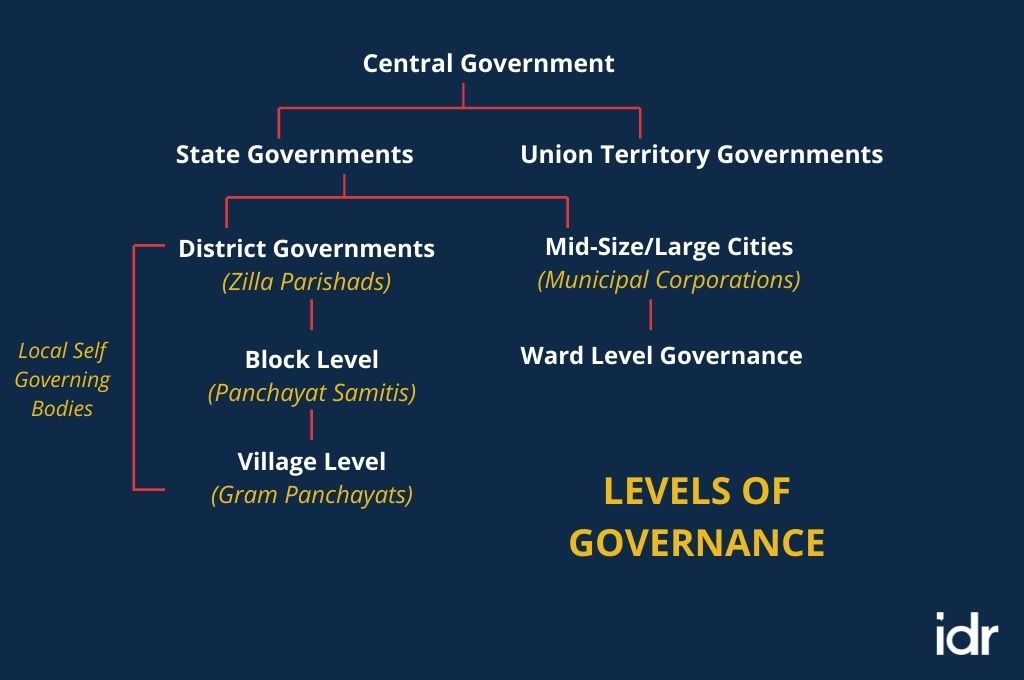Historically, nonprofits in India have faced numerous challenges when partnering with government, such as complex application processes, long timelines, and uncertainties in agreements. Although government bodies are now more open to partnerships with nonprofits than they were eight to 10 years ago, there is no standard process for formulating such partnerships, which can make it all the more difficult.
Working with government systems can be challenging but also extremely rewarding for nonprofits. For instance, there is a significant amount of money available in the government system, but not many nonprofits have identified how to tap into these funds. As a result, they resort to the challenging task of raising funds independently. By spending time understanding how to successfully apply for government grants or get into the tendering process, nonprofits can bridge some of the funding challenges they face. Similarly, for nonprofits looking to scale their work across a state or multiple states, there is no better option than to work with the government. The financial and human resources available to the government exponentially exceed those that would ever be available to a single nonprofit programme.
At Leadership for Equity, we have spent the last six years working with governments across district, state, and national levels. Here are five things we have learnt that can be of value for nonprofits seeking to work with governments.

1. Understand the structure of the government and how information flows
The structure of the government can be unpacked by looking at it through three aspects: levels, government bodies, and people. At the national level, there are ministries that set the national agenda across various sectors, including education, agriculture, and health. The national government has the state governments below it, under which are local government bodies such as district, block, and cluster. The degree of autonomy each body can exercise may vary across levels, with bodies at lower levels of the government executing the responsibilities assigned to them by those at higher levels. Each body of government across levels is composed of people (that is, officials), who are in charge of leading these bodies and executing their functions.

It is extremely important for nonprofits that aim to collaborate with the government to understand the flow of information across the systemic hierarchy. This enables the organisation to identify where breakdowns might happen and take the necessary precautions to ensure that things continue to move forward. For instance, within the education sector, work most often gets stuck at the state level; however, if you are aware that there is a decision-making body present at the district level, you could approach it directly to help your work proceed. Being aware of the structure of government also helps nonprofits plan proposals that the government would be more receptive of.
2. Think carefully about the level of government you need to engage with
The level of government that an organisation would approach and the capacity in which the government would be approached relies on the form of interventions they design and who the end beneficiaries of its interventions are. The expertise of one organisation may lie in directly working with students or teachers, whereas another may work with Anganwadi workers to provide vaccinations. In the latter case, the organisation works directly with the community, so it would only need to approach state leadership for advocacy or permissions, and not partnerships.
District-level bodies often need help with programme implementation, and are happy to accept support from a nonprofit.
In our experience, district-level bodies are typically the most receptive because they are closest to the end beneficiary. They have specific responsibilities, understand what is required in their particular geography, and are in a position to take decisions. However, they are often swamped with the priorities that are assigned to them by the state and national ministries. Therefore, district-level bodies often need help with programme implementation, and are happy to accept support from a nonprofit. At higher levels, decision-making entails a political dimension that might complicate the situation.
3. Don’t build parallel systems or interventions
If a nonprofit is working with the government but their solution is in parallel to what the government is doing, they are further fragmenting the ecosystem rather than building on to or leveraging what already exists. For instance, the State Council of Education Research and Training bears the responsibility of training teachers in government schools. However, many nonprofits invest significant sums into developing modules for training teachers, which they approach the government with. This solution seeks to replace the existing system rather than complementing the government’s efforts. Even if a parallel programme receives government approval, it ultimately leaves the teachers and students confused since they get different instructions on the same topic from multiple sources. As a result, the ultimate aim of an improved teaching–learning process remains unfulfilled.

Therefore, the solutions that nonprofits design should instead be based on need-gap analyses and compensate for what the system lacks. By integrating their interventions into existing government programmes, nonprofits can build stronger, impactful partnerships that are more sustainable. In our experience, some government bodies are great at strategising and some can effectively operationalise a plan, but most struggle with planning and implementing monitoring structures at scale. Therefore, a nonprofit can be a valuable partner to a government body by assisting with breaking up a programme goal into milestones and setting up monitoring structures for each milestone.
4. Approach officials strategically
To identify the person who will champion their cause within the system, nonprofits need to first understand the various roles and responsibilities of government officials. Leadership positions within government bodies are occupied by either political or administrative heads depending on the functions their body is responsible for executing. While political heads are typically in charge of big-picture tasks such as setting up the vision, the administrative heads ensure the implementation of the government’s vision through policies and programmes.
Looking at the hierarchy, at the national level, there is a cabinet minister who is assigned to a particular ministry. If we are to use education as an example, this would be the minister of education. While the minister is the political head who handles the ministry’s vision and communication, its implementation at the state level is carried out by the principal secretary, who is an IAS officer. Although most departments have similar structures, diversity generally emerges at the district level. At each level there are a mix of administrative and political heads. For instance, the chief district-level official is the collector, who is an elected political head. However, under the collector is the chief executive officer/chief development officer (CEO/CDO), who oversees the implementation of programmes across various departments. The departments overseen by the CEO/CDO have their own respective heads, who handle the administration of these departments under the guidance of the CEO/CDO.
Even when a nonprofit is working at a policy level, it needs to be aware of the conditions on the ground and offer adequately rooted suggestions.
If a nonprofit is working on policy interventions, it will work with the officials in leadership positions. For example, at the state level, one would work with the principal secretary and the education commissioner. If a nonprofit wants to focus on implementation, it should work with the district- and block-level officials, as they are the ones overseeing the implementation of programmes within the communities. However, even when a nonprofit is working at a policy level, it needs to be aware of the conditions on the ground and offer adequately rooted suggestions.

5. Engage empathetically with government officials
For nonprofits, it is also critical not to operate from a place of authority, as it would seem arrogant for an organisation to assume that it can step in and teach the government how it should function. The dominant conception of public departments posits them as slow, lazy, and ineffective. However, systemic uncertainties such as delays in fund disbursement, changes in political/bureaucratic leadership, and extremely tight deadlines are actually responsible for the inconsistent performance of these departments. Although the bodies may consist of officials who are intelligent and efficient, they are also overburdened. Additionally, government officials, especially those closer to the ground, develop deeper insights into the communities under their charge and how they can be helped. However, they may lack the resources to single-handedly effect change in these communities. Therefore, when attempting to work with government officials, it is important to be sensitive to the various challenges they experience and not take away their agency by neglecting their expertise and ideas.
There are no regulations that limit nonprofits from approaching a government body to engage in collaborative endeavours.
There are no regulations that limit nonprofits from approaching a government body to engage in collaborative endeavours, but the mindset of the officials that lead these bodies plays a major role in whether any proposals are accepted. While some may welcome collaboration, others may perceive the proposal of alternate solutions as a threat to the work they are doing. Recognising their apprehensions and finding ways to alleviate these fears in a respectful and empathetic way can go a long way in setting a partnership up for success and sustainability.
Whether a government partnership works out or not is ultimately determined by a number of factors; however, keeping these five principles in mind before you start can tip the odds in your favour.
—
Know more
- Read this explainer for an in-depth look into local government in India.
- Learn more about the various projects Leadership for Equity is undertaking at the state, district, and city levels.






